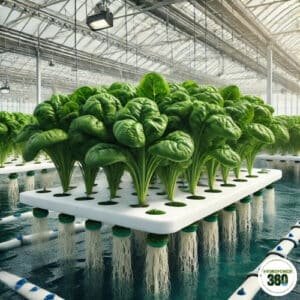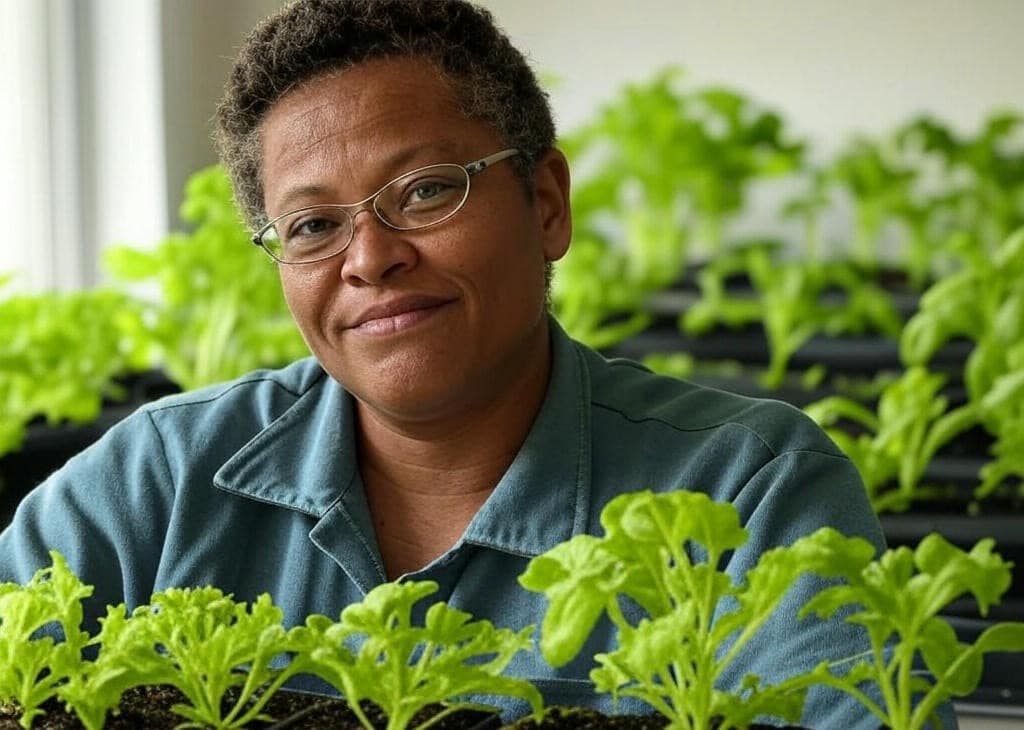Meet Hydroponic Spinach: Eco-Friendly Supergreen
Table Of Content
Growing hydroponic spinach is a move for growers who enjoy quality. Are you one of us? This is the button you can push. Spinach, being a high-yielding, high-value crop that is relatively low-maintenance, is an instant fit for hydroponics. And when it’s done right, you can harvest yields so clean and densely packed they make crops grown in soil appear to be substandard roughage.

Why Choose Spinach for Hydroponic Growth?
Hydroponic gardening offers a controlled, efficient method to grow leafy greens, and spinach stands out as a top choice for this method. Whether you’re a home grower or looking into commercial production, here’s why spinach thrives in hydroponics:
Nutritional Benefits of Spinach
Spinach is a superfood packed with essential nutrients. It’s low in calories yet rich in vitamins and minerals, making it a staple in health-conscious diets. Here’s what you get in every leafy harvest:
- Vitamins: Rich in Vitamin A (as beta-carotene), Vitamin C, Vitamin K1, and folate.
- Minerals: High in iron, magnesium, potassium, and calcium.
- Antioxidants: Contains lutein, zeaxanthin, and other antioxidants that promote eye health and reduce oxidative stress.
- Fiber: A good source of insoluble fiber that aids digestion.
Growing spinach hydroponically means you can enjoy these nutrients without the worry of soil contaminants or pesticide residues—especially if you’re growing organically.
Spinach’s Adaptability to Soilless Systems
Spinach adapts remarkably well to a variety of hydroponic systems, such as Nutrient Film Technique (NFT), Deep Water Culture (DWC), and Ebb and Flow. It has a relatively small root system and thrives in consistent, nutrient-rich water environments. Because spinach doesn’t demand complex pollination or vertical space, it fits seamlessly into compact setups or vertical farms.
This adaptability makes it an excellent crop for beginners and seasoned hydroponic growers alike. You can cultivate it indoors under growing lights or in greenhouses with minimal fuss.
Short Growth Cycle and High Yield Potential
One of spinach’s biggest advantages is its fast-growing nature. In ideal hydroponic conditions:
- Germination begins within 5–7 days.
- Plants reach harvest maturity in 30 to 45 days.
- You can use a cut-and-come-again technique to maximize yield from a single planting.
The short cycle allows for multiple harvests per year, especially in climate-controlled environments. This quick turnaround makes it a high-yield option, especially valuable in commercial hydroponic operations where turnaround time directly impacts profits.
Selecting the Right Spinach Variety
Not all spinach varieties perform equally well in hydroponic systems. Choosing the right cultivar can make the difference between a successful harvest and a frustrating experience.
Best Spinach Cultivars for Hydroponics
Here are some of the most reliable spinach varieties for soilless systems:
- Bloomsdale: A popular heirloom variety with crinkled, dark green leaves. It has great flavor and tolerates cooler temperatures, though it’s slightly more prone to bolting.
- Space: A smooth-leaf hybrid that’s very bolt-resistant and well-suited for hydroponics. It grows fast and evenly, making it a favorite for commercial production.
- Tyee: Known for its disease resistance and semi-savoyed leaves. Tyee is particularly good for fall and winter growing in hydro systems.
- Red Cardinal: Offers visual appeal with red-veined leaves. While slightly more sensitive, it performs well in controlled environments.
- Crocodile: A newer hybrid with excellent resistance to downy mildew and good yield performance in NFT and DWC systems.
Traits to Look for in Hydroponic Spinach Varieties
When selecting spinach seeds for hydroponic use, prioritize varieties that offer:
- Bolt Resistance: Look for cultivars labeled as “slow to bolt” or suited for warmer conditions. Bolting (premature flowering) ruins flavor and texture.
- Disease Resistance: Choose varieties resistant to downy mildew, leaf spot, and other common leafy green pathogens.
- Compact Growth Habit: Compact or semi-upright growth allows better air circulation and maximizes space in dense hydroponic setups.
- Uniform Maturity: For commercial or large-scale home systems, uniform growth simplifies harvest timing and nutrient management.
Getting Started: What You’ll Really Need
Spinach only needs stability, and stability is what you get through hydroponics. Nutrient Film Technique (NFT) and Deep-Water Culture (DWC) are the most popular systems for growing hydroponic spinach. NFT is best for when you are looking for high speed and turnover. DWC best suits small-scale operations indoors and novices.
You will need a grow light featuring the blue light, a reservoir, an air pump, net pots, rockwool or coco coir as your medium, and an EC/pH meter. Don’t forget to provide ventilation too, since spinach loves well-aerated, chilly conditions.
Call-In Conditions for Hydroponic Spinach
Spinach likes chilly weather, as mentioned before; that’s all. Use 18–21°C (65–70°F) water temperatures and air temperatures under 24°C (75°F). Anything above, and you’ll encourage bolting, which destroys flavor and shatters your harvest schedule.
Maintain pH between 6.0 and 6.5. Your EC will be approximately 1.5 to begin and relative to plant size at harvest. Spinach can be sensitive to too high a load of nutrients when it’s young, so start light and gradually increase. Lighting requirements? Approximately 12–14 hours at a medium light level. Too much high light and heat and you’ll wilt the leaves and encourage bolting.
Seed to Harvest: A Guide to Follow
Sow your seeds in a dark, moist location; rockwool cubes on a covered tray work perfectly. Spinach seeds are fussy, so soak your seeds and let them dry for a day or two before sowing to encourage them to break dormancy.
Transplant into your hydro system when you have a well-developed-looking root system and your first set of actual real leaves. Spacing is key—provide the plant with a 6–8-inch breathing space.
Keep an eye on leaf color and rate when growing. Paler-colored leaves are generally an indicator you’re running low on nitrogen or having a pH issue. Yellow tips are the onset of nutrient burn.
Potential Problems for Hydroponic Spinach
Spinach does not like drama. Bolting is the #1 issue, usually caused by heat or too much light. Stay cool, and don’t blast your greens with high-output LED panels for fruiting crops. Leave it in leafy green mode.
Leaf spotting and yellowing may indicate a fungal issue or a situation in which the air isn’t circulating. Prevent humidity from building too high and clean the grow space regularly. When the roots start to turn brown or develop a slimy texture, oxygenate the water more and check for root rot.
Feeding Spinach: The Foods It Needs
Maintain a balanced leafy green fertilizer solution. Preferably use 2-1-2 NPK for early development. Once the plant is established, you can shift a little closer to 3-1-2 or 3-1-1. Don’t overuse calcium or magnesium, except for the sake of deficiency issues—spinach takes what it needs when it needs it, and you’ll be left with excess in your system.
Feed routinely but be mindful of runoff. Spiking EC or pH drift are signs that your plants are not absorbing what you are feeding them. Flush when necessary and calibrate.
When and How to Harvest Hydroponic Spinach
Harvest when the leaves are full-grown but still tender, best 25 to 35 days after transplanting. Cut the entire plant at ground level or take off the outside leaves and let the inner crown resprout. For a series of harvests, be cautious. Pick 30–40% or fewer at a time. Handle the leaves gently; no one wants wilted spinach, especially if you’re selling it.
FAQs
How long does hydroponic spinach take to grow?
From seed to harvest, you’re looking at 30–40 days, depending on your system and conditions.
Can hydroponic spinach regrow after harvest?
Yes, if you harvest outer leaves and leave the crown intact, most varieties will regrow for another round.
Is hydroponic spinach more nutritious than soil-grown spinach?
It can be. Because you control nutrient intake and avoid soil contaminants, spinach often has higher purity and consistency in mineral content.
Table Of Content
